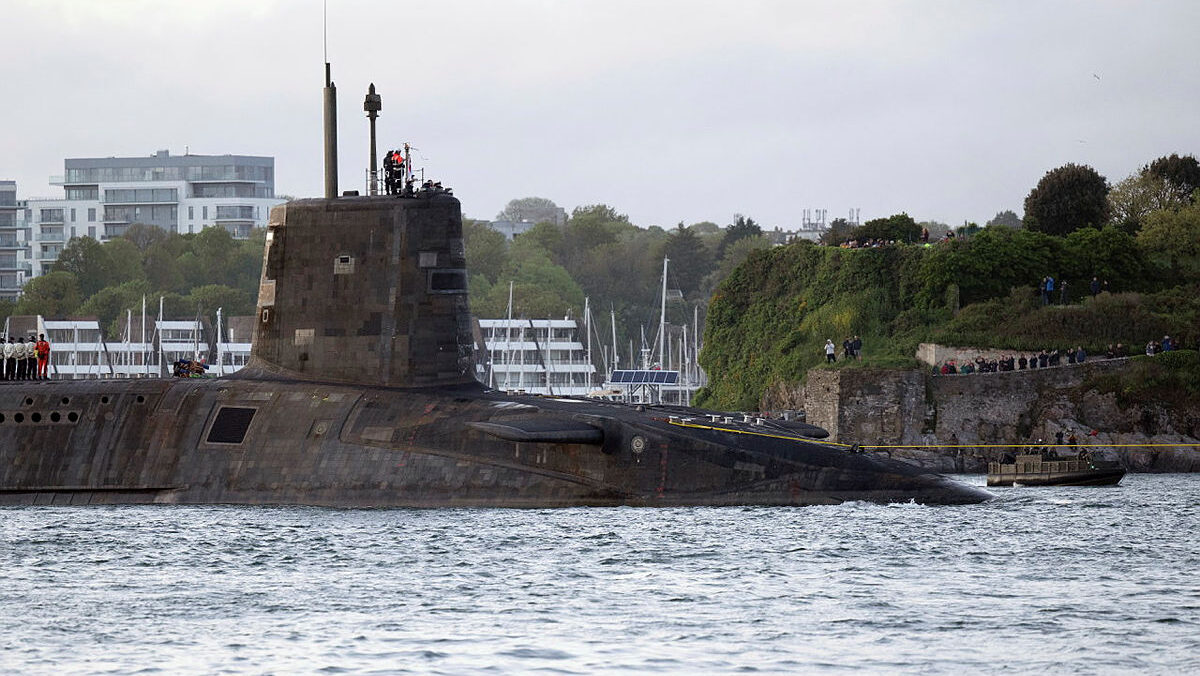
The Royal Navy’s HMS Vanguard nuclear capable submarine leaves HMNB Devonport, England, after a more than seven year refit. (UK MoD)
BELFAST — A senior UK defense minister told lawmakers today that a Royal Navy Vanguard-class submarine carrying Trident nuclear missiles was saved from sinking to a dangerously low depth after its crew used a back up depth gauge to keep the vessel diving within safe limits.
James Heappey, UK armed forces minister, said during a defense committee hearing today that the second depth gauge “was able to avert what was reported to be imminent.”
His comments confirm a report from the BBC that the second depth gauge was critical to preventing a potentially catastrophic incident that purportedly took place more than a year ago. Officials have revealed little about the incident in which the main depth gauge on the sub reportedly failed while the boat was preparing to go out on patrol and diving, potentially endangering the crew.
The BBC also reported that the Royal Navy launched an investigation into the incident.
Heappey went on to reassure lawmakers that the safety of the Vanguard vessel is in hand, appearing to double down on British maritime readiness with a thinly veiled warning to Britain’s potential adversaries.
“The commander of the Russian Northern Fleet should have absolute confidence that the armed patrol bomber is ready,” he added.
The UK operates four Vanguard class submarines, but the name of the individual vessel to have been put at risk has not been shared publicly. As a rule, Britain’s Ministry of Defence does not comment on nuclear submarine operations.
Each Vanguard submarine carries 48 Lockheed Martin-made Trident 2 D5 nuclear warheads, capable of striking targets out to a range of 4,000 miles away and are fitted with CK51 search and CH91 attack periscopes, according to the Royal Navy. For the Tridents, expanding gas pressure is used to launch the missiles from a launch tube, with the munition entering a boost phase when making contact with service water, the point at which it then expands first, second and third stage rocket motors, states the US Navy.
In 2016, UK lawmakers voted in favor of keeping the UK’s nuclear deterrent out to the 2030s, since leading to procurement approval of four Dreadnought-class ballistic missile submarines (SSBN) to replace the Vanguard class.
BAE Systems is the lead contractor and shipbuilder for the next generation Dreadnought subs, which it says will each measure 153 meters long and have a displacement of 17,200 tonnes (19,000 tons).
The new vessels will also be armed with Trident missiles. The UK currently participates in the US-led Trident life extension program so the weapon can be updated and in service until the 2040s or beyond. James Cartlidge, UK minister for defence procurement, disclosed to parliament in June that the UK spent £321 million ($400 million) to enter the project.
That figure rises to over £820 million ($1 billion) when other supporting nuclear submarine modernisation efforts are accounted for, including missile programs addressing component sustainment and rocket motor life cycle extensions.
Australia tops up Ukraine military aid with $100M
Australia has already supplied Ukraine with 120 Bushmaster vehicles, six 155mm howitzers, 56 M113 armored vehicles, 14 special operations vehicles and its signature cardboard drones.


























